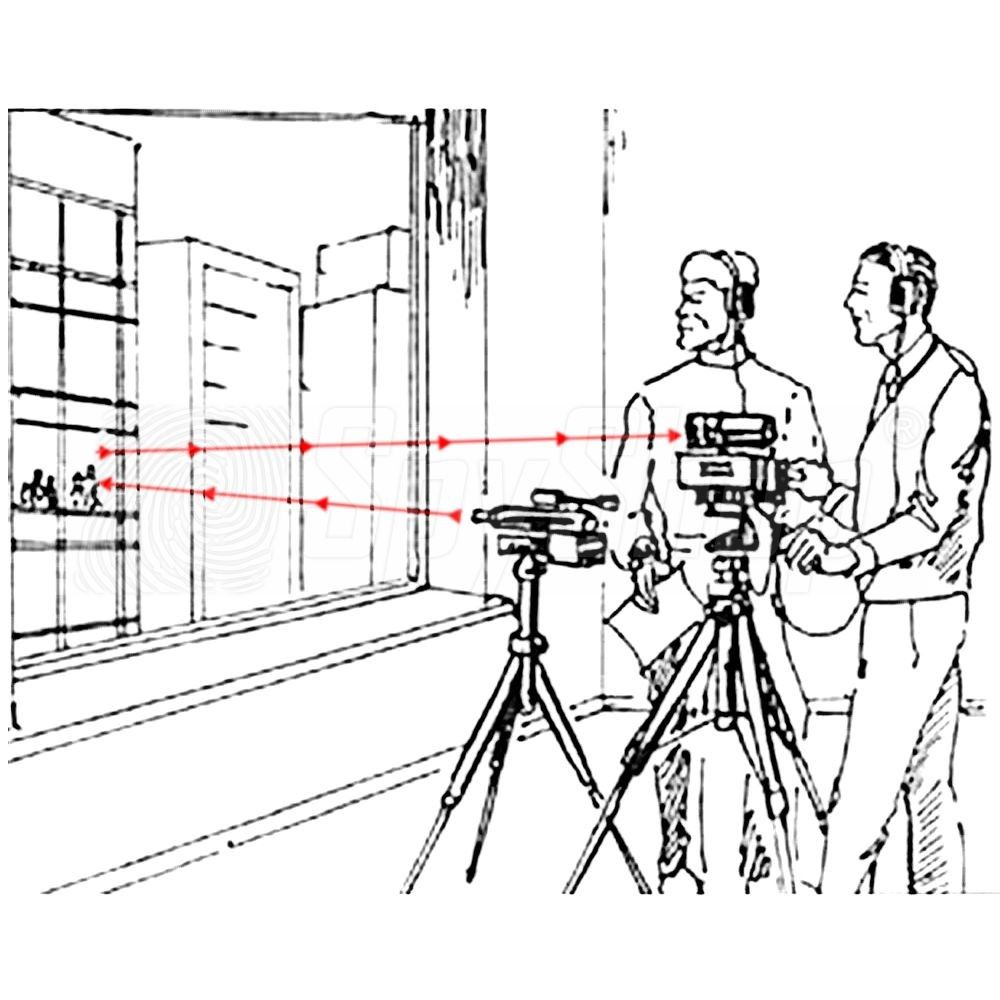
In the realm of espionage and surveillance, technology continually evolves to meet the demands of covert operations. Among the arsenal of tools employed by intelligence agencies, the laser microphone stands out as a sophisticated and discreet device capable of eavesdropping on confidential conversations from a distance.
Technology Behind Laser Microphones:
At its core, a laser microphone operates on the principle of capturing sound vibrations from a distant target by monitoring the vibrations of a surface, typically a window pane. The key components include a laser beam, a photo-detector, and advanced signal processing technology.
a. Laser Emission:
The laser emitter directs a beam towards the surface near the conversation zone. This beam is typically invisible, ensuring that the operation remains covert. The laser beam behaves like a carrier signal, modulated by the vibrations induced by sound waves on the targeted surface.
b. Surface Vibration:
When sound waves from the conversation hit the surface, they cause minute vibrations. These vibrations, although imperceptible to the human eye, induce changes in the laser beam’s reflection pattern. The laser microphone captures these changes.
c. Photo-Detector:
Positioned at a safe distance from the conversation zone, the photo-detector receives the reflected laser beam. The changes in the reflection pattern, corresponding to the sound-induced vibrations, are then converted into an electrical signal.
d. Signal Processing:
Advanced signal processing algorithms analyze the electrical signal, isolating the audio frequencies associated with the conversation. Through this intricate process, the laser microphone transforms vibrations into a discernible audio signal, revealing the spoken words and ambient sounds within the targeted area.
Applications of Laser Microphones:
a. Surveillance and Intelligence Gathering:
Laser microphones have been employed in various espionage scenarios where traditional eavesdropping methods may be impractical or risky. Intelligence agencies may use these devices to eavesdrop on conversations in secured buildings or across large distances.
b. Law Enforcement:
In certain law enforcement situations, laser microphones can be utilized for gathering evidence in a discreet manner. They may assist in monitoring targets during investigations or surveilling criminal activities.
c. Security Measures:
Some organizations and businesses employ laser microphones as part of their security measures to monitor restricted areas. By capturing sounds near sensitive locations, security personnel can detect potential breaches or unauthorized access.
Ethical Considerations and Privacy Concerns:
a. Invasion of Privacy:
The use of laser microphones raises significant ethical concerns, particularly regarding the invasion of privacy. Unauthorized eavesdropping on private conversations, whether in personal or professional settings, infringes upon individual rights and violates expectations of confidentiality.
b. Legal Implications:
In many jurisdictions, the use of laser microphones without consent is illegal. Laws regulating wiretapping and surveillance vary globally, but in general, intercepting private conversations without proper authorization can lead to legal consequences.
c. Balancing National Security and Privacy:
Governments often grapple with the delicate balance between national security interests and individual privacy rights. Striking an equilibrium requires transparent regulations and oversight mechanisms to ensure responsible use of surveillance technologies like laser microphones.
Countermeasures and Protection:
a. Window Treatments:
Applying specialized window treatments, such as films or coatings designed to absorb vibrations, can disrupt the efficacy of laser microphones. These treatments alter the reflective properties of the surface, making it more challenging for the device to capture accurate sound vibrations.
b. White Noise and Jamming:
Introducing background noise, often in the form of white noise or intentional interference, can thwart laser microphone operations. Electronic jamming devices may disrupt the clarity of the captured audio, rendering it unintelligible.
c. Security Audits:
Regular security audits, including physical inspections of potential eavesdropping vulnerabilities, can help identify and address potential risks. Organizations may also implement strict access controls to limit unauthorized individuals’ proximity to sensitive areas.
Advancements and Future Implications:
a. Miniaturization and Integration:
Ongoing advancements in technology have led to the miniaturization of laser microphone components, making them more discreet and easier to conceal. Integrated into other devices or even drones, these advanced laser microphones pose new challenges for counter-surveillance efforts.
b. Artificial Intelligence Integration:
The integration of artificial intelligence (AI) into surveillance technologies, including laser microphones, enhances their capabilities. AI algorithms can more accurately filter and analyze audio data, potentially increasing the sophistication and stealth of these devices.
c. International Regulations:
The ethical and privacy concerns surrounding laser microphones have prompted discussions on the need for international regulations. Establishing clear guidelines and protocols for the use of surveillance technologies can help mitigate potential misuse and protect individual privacy.
Conclusion:
The evolution of surveillance technologies, exemplified by laser microphones, underscores the perpetual cat-and-mouse game between those seeking information and those aiming to protect it. As these devices become more advanced and discreet, the need for robust ethical frameworks, legal regulations, and countermeasures becomes increasingly urgent.
Striking a balance between national security imperatives and the protection of individual privacy remains a complex challenge. Ethical considerations must guide the responsible development and use of surveillance technologies to ensure a society where security and privacy coexist harmoniously. As technology continues to shape the landscape of surveillance, ongoing dialogue and vigilance are essential to navigate the delicate intersection of innovation, security, and individual rights.
- Between ASUU’s “quacks” And Nans’s “cracks” – Farooq Kperogi
- Israel vs UNRWA: Deflection and deception
- Victims rescued as Building sinks in Lagos
- Bandits kill soldier, injured three others in Kaduna village
- England cricket legend Sir Ian Botham rescued by ex-rival after falling in crocodile-infested waters
- I Didn’t Give Falz Or His Dad Money For Pardon – Bobrisky










